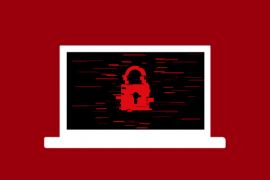Cloud security is only as good as its weakest link
Views, News & more

In this day and age, when we are surrounded by state-of-the-art technology and the most up-to-date security systems, the existence of even a basic cloud makes security less of an issue for businesses. Indeed, often is the case that cloud-based security protocols are superior to that of on-premises systems that fail to benefit from further research and development funding.
Then why is it that IT professionals still voice concerns about cloud security? It is because we tend to forget that these public clouds are not lone wolves; rather, they work in conjunction with other third-party systems to enforce security. For example, credit-checking and data-validation services are just an example of the kinds of external systems that public clouds rely on, as well as a numerous other traditional on-premises platforms.
The weakest link
The saying goes that a chain is only as strong as its weakest link, and this is true of the cloud as well. A business is only as safe as its least secure system and does not require more technology thrown into the mix to improve protection. Instead, the focus ought to be on the synergy of the cloud with other systems and their integration to maximise security.
The assumption has always been that a simple blanket of security will protect an enterprise entirely, and those working in technology often forget the importance of properly integrating the cloud with on-premise systems. This is why a unified approach to complete cloud security and technology stack can prove beneficial in the long-term.
How can proper cloud integration be achieved?
There are a range of products available on the market to facilitate the integration. “Single pane of glass” products can link identity management systems with traditional on-premise platforms, with directory systems often being the common denominator; the flaw, however, is that a breach in this security system can reveal sensitive profile and auditing information that can encourage further breaches.
For more successful ways to manage the synergy, it is primarily important to establish the platforms of communication between all systems. A secure directory system is the most reliable, but there are a number of other databases that can be considered. However, it’s important to note that significant coordination is absolutely key to ensure that the security protocols are running smoothly.
It is also advisable to install a “single pane of glass” management and monitoring product on both the cloud and the on-premise system. This is to promote transparency from both sides so as to ensure a level of security from both angles.
Thirdly, and perhaps the most important of them all, is that cross-system security tests ought to be frequent and mandatory. An aspect that is constantly overlooked by IT departments, regular testing will allow companies to spot flaws and holes well before hackers, and will ensure that the whole security ecosystem is running in unison at any given point.
Relatively speaking, the notion of cloud security integration is a simple goal but is difficult to achieve. As with any organisation, internal politics may get in the way of enforcing thorough security and it is often the case that businesses lack the education and talent to put in place prevention measures. However, if cloud security is avoided entirely, it is likely that businesses could suffer due to the dire consequences of a vulnerable public cloud system.
Get in touch
020 7847 4510
We may process your personal information in order to send you information you request, measure and improve our marketing campaigns, and further our legitimate interests. For further details, see our privacy policy.
Contact us
-
- Head Office:
- hSo, 50 Leman Street, London, E1 8HQ
- Switchboard:
- 020 7847 4500
- Support (24x7):
- 0333 200 3337
- support@hso.co.uk
- Marketing & Sales:
- 020 7847 4510
- info@hso.co.uk

















